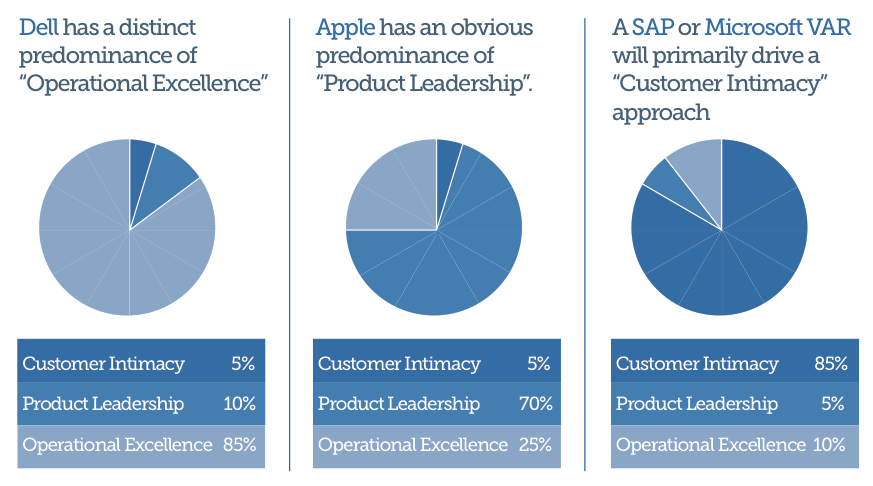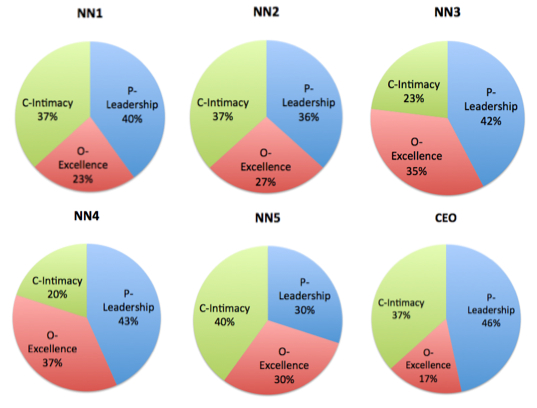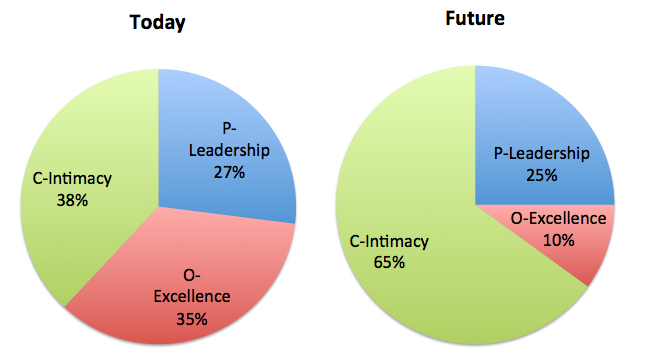The magical 10 minutes – part 6

Strategy Alignment Check in just 10 min.
This is the 6th post in the series “The Magical 10 minutes”.
How long does it take to check if your management team is pulling and pushing in the same direction?
10 minutes!
The first blog post explained how you could ask yourself and each member of your management team to prioritize the 6 sources for financial growth.
The post #2 dealt with assessing the competitive environment.
The post #3 was about how to check if you all agree on what is your Customer Value Proposition.
In the post #4 we started sharing some real life examples of internal misalignment on priorities for sources of growth.
In post #5 we looked at how a management team viewed the competitive situation of their company.
In this post #6 we will review how members of a management team are actually perceiving the “Customer Value Proposition” of their company or business unit.
Customer Value Proposition
You get 10 million hits on the Internet when searching the term Customer Value Proposition. Nevertheless, there is still a lot of confusion in business, when it comes to really defining what it is. When you ask managers about their company’s Customer Value Proposition you mostly get answers centered around the products and services they provide – not the value they create.
When researching how aligned management teams are on the perception of their Customer Value Proposition we must have a framework, which leaves no or only very little room for interpretation. Attempting to rewrap all Customers Value Propositions in the world into the same conceptual format is not going to be operational. Instead we have chosen to ask managers how much emphasis their Customer Value Proposition are placing on the 3 fundamental value elements:
- Customer Intimacy (C-Intimacy)
- Operational Excellence (O-Excellence)
- Product Leadership (P-Leadership)
Using this [slider title=”framework”] We call this “The Three Value Elements Approach”. [/slider] enables us within very short time and with very little instruction to illustrate each managers perception in a pie chart and thus compare them with those of the other members of the management team. We can now illustrate and even measure the degree of alignment in the perception of the Customer Value Proposition.
In post #3 we showed the Customer Value Proposition of 3 well know companies translated into this format:

Three different Customer Value Propositions interpreted by TBK Consult
Customer Value Proposition alignment check in Company ABC
Let’s take a example from a Customer Value Proposition alignment check in a real company. Company ABC is an Independent Software Vendor with a 6 person management team. They are developing software solutions for the the discrete manufacturing industry (build-to-order). The company is operating internationally serving customers in several countries.
We asked the management team to translate their current customer value proposition into the three value elements and got the following answers:

6 Customer Value Proposition in Company ABC – TODAY
As you can see NN4, NN3 and the CEO are fairly well aligned. NN1, NN2 and NN5 are very different from each other and from the first group.
Are we just facing different interpretations of the same Customer Value Proposition? From the discussion following this analysis I can confirm that this is not the case. The management team genuinely had different perceptions of how the company created value for their customers.
A company’s Customer Value Proposition dictates which management areas are important and which are not. If a management team have different perceptions of the Customer Value Proposition, they will also disagree on where the company should focus and invest.
Thus difference in the perception of the Customer Value Proposition will tap energy and momentum from the management team as they struggle to drive the company in all different directions.
We then asked the management team to translate how they saw their future customer value proposition into the three value elements and got the following answers:

6 Customer Value Proposition in Company ABC – FUTURE
Again you see major differences in the changes the individual member of the management team consider required and also in which direction the Customer Value Proposition should develop.
Now NN1, NN2 and NN5 are close to each other, NN3 and NN4 also view the future somehow the same although different from the first group. The CEO is somewhat alone with his view on where the company should go.
Obviously these observations and the discussion which followed made the management team consider carefully what kind of company they actually were and how they should generate value for their customers.
Following these discussions the management team came to the following conclusion:
Although we are an Independent Software Vendor our main strength is our deep domain knowledge and our ability to meet the needs and requirements of our individual customer. We want to develop the domain knowledge even further and in the future we must be able to help our clients become increasingly more productive by using our products and services also in combination with products and services from other suppliers.
The management team agreed that the Customer Value Proposition Today and the wanted Customer Value Proposition in the Future should look like this:

The Customer Value Proposition of Company ABC – Today and in the Future
The primary reason for the misalignment was the lack of a framework for discussing and defining Customer Value Propositions. Based on the Three Value Elements Approach the management team was able to come to an agreement, although the balance between Customer Intimacy and Product Leadership was a tough one.
Based on the Three Value Elements Approach the management team decided to work on developing an external Customer Value Proposition, which could serve as the guideline for the entire company and also serve as a positioning tool vis-a-vis customers and competitiors.
Are Customer Value Propositions important?
Would you agree that your company must have a Customer Value Proposition (CVP)? I assume you do. Yet it is interesting to ask managers about their company’s CVP.
From my experience 9 out of 10 managers are not capable of explaining how their company is creating value for their customers and how their approach is superior to the competitive alternatives available? Even applying the simple “Three Value Elements Approach” gives answers which points in all directions”
Although the concept of the Customer Value Proposition has been around for years and is fairly well described in the management literature, it has not yet been applied throughly in business. Why not?
Because it is difficult.
It requires understanding how customers think and what they value. It requires deciding which customers you will focus on. It requires deciding which part of the value chain you will [slider title=”cover.”] Mainstream customers want a full solution, not only fragments from here and there that they have to assemble themselves. Do you want to manage the entire Value Chain or do you want to be part of someone else’s Value Chain?[/slider] It requires linking what you do with what customers value and understand how they compare what you offer with the competitive alternatives. It requires a framework for developing, defining and verifying the Customer Value Proposition.
Such frameworks [slider title=”exists”] You can download a description of the NABC Customer Value Proposition approach from our web site. Download [/slider], but a good and fast way of getting started is using the “Three Value Elements Approach”. This approach is easy to understand and can be applied within a few days. When you have your Three Value Elements in place you can continue with developing and defining your customized external Customer Value Proposition.
The next and final post #7 in this “The magical 10 minutes series” is discussing “the price of misalignment”. Stay tuned.
This series of blog posts on alignment uses concepts from the ValuePerform strategy framework.








